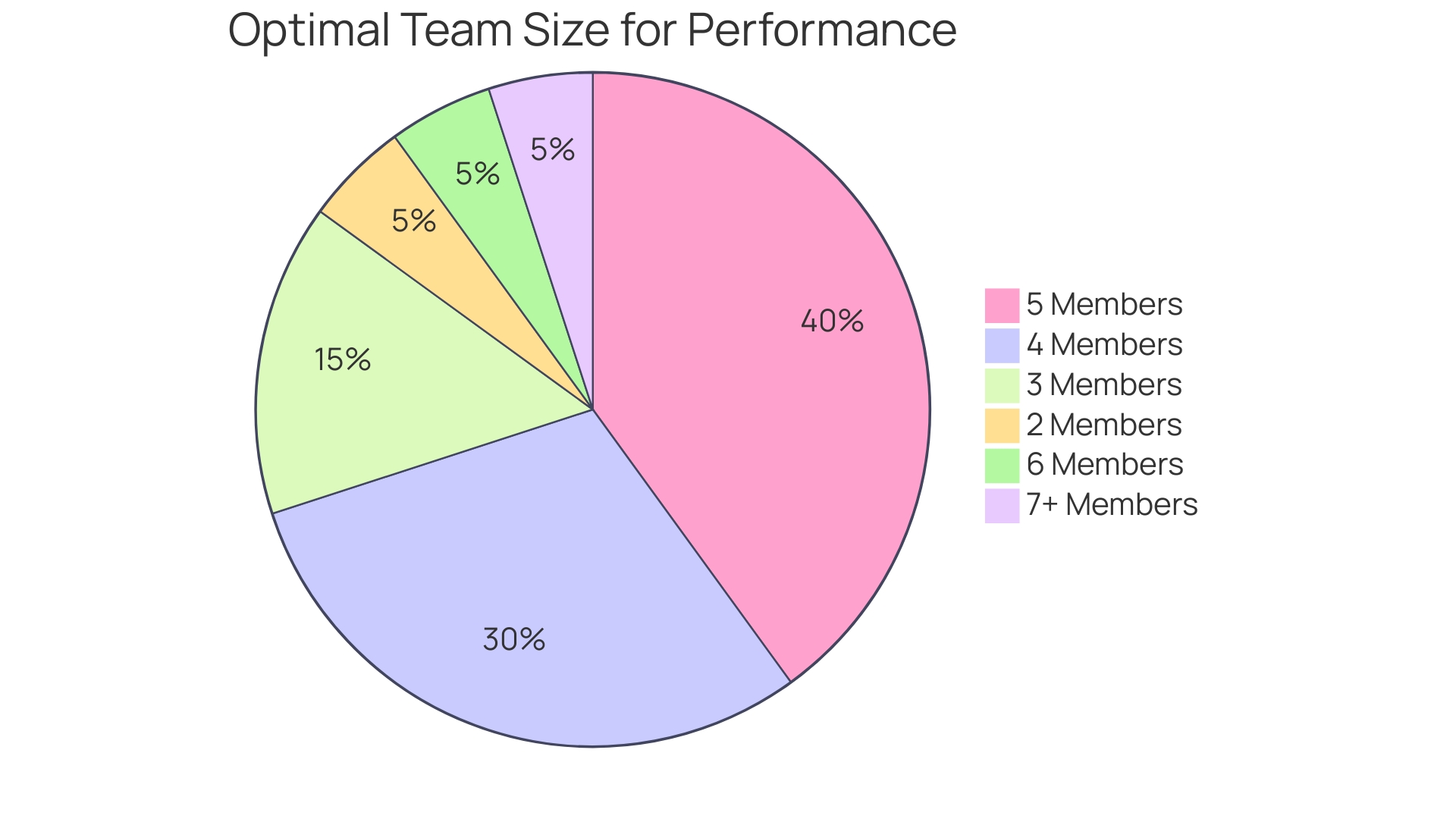Introduction
A robust development team can be transformative for a business, elevating it beyond the sum of its parts. In this article, we will explore the importance of a strong development team in building and maintaining the technical infrastructure essential for an e-commerce platform's stability and scalability.
We will delve into the significance of team dynamics, collaboration, and effective task management. Additionally, we will discuss how to identify the skills and roles needed for a successful team, as well as strategies for recruiting and hiring top talent.
Furthermore, we will explore the importance of fostering a culture of collaboration and communication within the team. Lastly, we will emphasize the value of ongoing training and professional development, as well as measuring and optimizing team performance. By the end of this article, you will have a comprehensive understanding of how to build and nurture a high-performing development team.
Understanding the Importance of a Strong Development Team
A robust development team, much like the synergistic partnership of Lennon and McCartney, can be transformative for a business, elevating it beyond the sum of its parts. When a development team is optimized and committed, they not only build and maintain the technical infrastructure essential for an e-commerce platform's stability and scalability, but they also bring efficiency and productivity to the forefront. This efficiency is crucial, as it allows businesses to focus on core operations and allocate resources to other vital areas like marketing and business development.
The importance of team dynamics cannot be overstated – a collaborative and cohesive group not only works faster but also enhances overall job satisfaction, which is pivotal for maintaining momentum towards shared goals of profitability and growth. The impact of a dedicated team is evident in the case of Boots and IBM® Consulting, who, following the IBM Garage Methodology, achieved rapid transformation despite the challenges posed by the pandemic. Similarly, Going, a modestly sized company, demonstrates how effective teamwork can enable a company to navigate complex challenges, such as logistics and inventory management, which are critical for e-commerce success.
Recent studies underscore the value of a well-sized, well-managed development team. Startups in high growth phases often double their headcount yearly, which can create significant organizational stress. Yet, the goal is not to eliminate chaos but to manage it effectively, striking a balance that allows the company to 'surf the edge of chaos' with enough structure to thrive.
Moreover, research suggests that the most productive development teams are not necessarily the largest, but those that balance team size with task management effectively. In an era where artificial intelligence is revolutionizing customer relations and offering personalized shopping experiences, and with the rise of Web3 and cryptocurrency payments on the horizon, the agility and adaptability of development teams are more crucial than ever. Acknowledging the hard work and contributions of team members, as highlighted by industry leaders, not only motivates but also fosters an environment where great people can do great things, ultimately propelling the business forward.
Identifying the Skills and Roles Needed
Assembling a top-notch development team is more than just a matter of collecting skilled individuals; it's about creating a cohesive unit that can navigate the complexities of today's tech landscape. This team must be well-rounded, with members proficient in various programming languages, adept at database management, and capable of handling both front-end and back-end development.
Quality assurance and project management are also vital roles, ensuring that the end product is robust and delivered on time. To build a team equipped for success, one must consider the unique contributions of each role.
The engineering lead, for instance, ensures the system's scalability, resilience, and performance, while the UX lead focuses on usability, accessibility, and aesthetics. It's crucial for the team to work in unison to resolve any escalations or blockers swiftly, maintaining open lines of communication with stakeholders at all levels.
In the current climate, where 21% of developers feel less job security than the previous year, fostering a positive work environment is more important than ever. Encouraging open communication and collaboration is key, as is recognizing individual contributions, as Michael Brown, an Engineering Manager, suggests. With less than half of companies having a clear career progression framework, providing growth opportunities within the team can be a significant advantage. Ultimately, the goal is to foster a team that not only possesses the technical and soft skills required but also aligns with the company's specific domain needs. By actively involving the team in creating a comprehensive list of responsibilities and ensuring a collaborative, appreciated, and secure environment, you lay the groundwork for a team that is not just capable but also committed to driving the company's success.

Recruiting and Hiring Top Talent
Building a high-caliber development team is more than just sifting through resumes; it's about designing a strategic hiring process that aligns with your company's unique culture and goals. MasterCard's executive vice president of APIs, Oran Cummins, emphasizes the importance of creating a tech-focused environment to attract top talent, showcasing that even traditional companies can reinvent themselves to become prime destinations for developers. When recruiting, it's crucial to not only assess technical prowess and past experience but also consider how a candidate's unique life experiences and diverse perspectives can contribute to innovative solutions and reduce the risk of project redundancies.
The recent capability model developed by Thoughtworks for a client, covering 17 roles across six core areas, exemplifies a structured approach that helps recruiters identify the right attributes in candidates. This model is instrumental in setting clear performance metrics and career paths, ultimately aiming to enhance employee satisfaction and retention, as indicated by their plans to roll out a talent strategy in 2023. Moreover, a survey cited in Harvard Business Review reveals that 43 percent of job-seekers prioritize career development opportunities, a factor that companies must address to retain top talent.
This is further supported by statistics showing that companies with well-documented career ladders for technical positions are more likely to keep their developers content and engaged. Lastly, the importance of diversity cannot be overstated, with companies in the top quartile for executive team diversity being 9 percent more likely to outperform financially. This data underscores the necessity for a holistic and forward-thinking recruitment strategy that fosters an inclusive and growth-oriented workplace culture.
Fostering Collaboration and Communication
Building an optimal development team is more than just assembling a group of talented individuals; it's about fostering a culture where collaboration and communication thrive. Encouraging team members to share their insights and experiences through platforms or forums can lead to a culture of continuous improvement.
By facilitating interactions between individuals with different areas of expertise, you allow for the integration of diverse perspectives into the project. This interdisciplinary approach is crucial, as demonstrated by the JetBrains and GitKraken study, which found that the key to team success is balancing team size with effective task management.
Diversity in team composition is also a powerful catalyst for innovation. A variety of backgrounds, perspectives, and experiences contribute to a broader range of ideas and solutions.
Mentorship within the team is another avenue for promoting professional growth and building a positive work culture. As the State of Git Collaboration Report indicates, productivity and collaboration are two fundamental axes for a successful development team.
However, the complexity of tools like Git can hamper productivity, while distributed work can obstruct collaboration. It's essential, therefore, to clearly define roles and responsibilities within the team to prevent confusion and promote accountability. Moreover, collaboration instills a sense of loyalty and commitment, enhancing individual and organizational productivity. The increase in remote work necessitates reliance on objective measurements to maintain confidence in the new working arrangements. As markets emphasize efficient growth and ROI, understanding how to optimize the performance of engineering talent becomes increasingly critical. By distinguishing between collaboration and coordination, as noted in the report, companies can significantly impact their productivity and bottom line.
Providing Ongoing Training and Professional Development
Continuous learning and professional development are the linchpins of a dynamic development team, propelling both individual and organizational growth. Regular, focused learning sessions, even brief ones, have been shown to culminate in substantial progress over time.
For example, Spotify's observational study revealed that participation in applied learning activities led to a 19% increase in productivity and a notable uptick in promotion rates by 21%, while reducing attrition by 15%. These figures underscore the tangible benefits of cultivating a culture of continuous improvement.
Embracing a '70/20/10' learning model, as suggested by industry experts, can be transformative. This approach allocates 10% of learning to formal education, 20% to mentorship, and a significant 70% to hands-on, experiential practice.
Such a model ensures that new skills are not only learned but also adeptly applied in various scenarios, keeping the half-life of a skill's value in check. Incorporating strategies like 'Half-Day Learning Fridays' or in-house lunch-and-learns can foster a conducive environment for knowledge sharing and team building. Moreover, enabling team members to attend industry conferences and obtain certifications can amplify their expertise and bring innovative solutions to the forefront. This investment in employee growth not only enhances their capabilities but also reflects a company's commitment to their career trajectory, which in turn, fortifies employee loyalty and job satisfaction.

Measuring and Optimizing Team Performance
Optimizing team performance is not solely about tracking traditional productivity metrics such as task completion or hours worked. In fact, research by Harvard professor Richard Hackman and Neil Vidmar revealed that team size plays a critical role, with teams of 4 or 5 members often being optimal.
Excessive size can lead to inefficiency and a perception of being too large. On the contrary, teams that are too small may not have enough resources to handle tasks effectively.
Lead and cycle times, measured using Kanban metrics, are pivotal for evaluating workflow effectiveness. Tools like Teamhood can automatically calculate these times, providing insights into task duration from the backlog to delivery.
This data-driven approach allows for the detection of inefficiencies and the implementation of process improvements. Code churn and merge frequency are also significant indicators of engineering efficiency.
Tracking these metrics via version control systems helps pinpoint areas for improvement. For instance, a high code churn rate may suggest unclear requirements or technical debt that needs to be addressed. Deloitte's 2024 Global Human Capital Trends report underscores that nearly 75% of business leaders recognize the importance of new performance metrics, yet only a fraction are actively implementing them. The Developer Velocity Index (DVI) benchmarks an enterprise’s technology and practices, highlighting areas such as backlog management and cross-team collaboration that, when optimized, can significantly boost performance. In conclusion, by focusing on predictive indicators and leveraging tools for real-time data analysis, teams can not only identify areas of improvement but also enhance their overall capacity and contribution to the organization's success.

Conclusion
A strong development team is essential for building and maintaining the technical infrastructure of an e-commerce platform. This article has emphasized the importance of team dynamics, collaboration, and effective task management in achieving stability and scalability.
It has highlighted the significance of identifying the necessary skills and roles within the team, as well as strategies for recruiting and hiring top talent. Creating a culture of collaboration and communication is crucial for fostering a high-performing development team.
The article has emphasized the value of diversity in team composition and the integration of different perspectives to drive innovation. It has also highlighted the need for ongoing training and professional development to promote individual and organizational growth.
Measuring and optimizing team performance requires a data-driven approach, focusing on metrics such as lead times, cycle times, code churn, and merge frequency. By leveraging tools for real-time data analysis, teams can identify areas for improvement and enhance their overall capacity. In conclusion, building and nurturing a high-performing development team requires attention to team dynamics, effective task management, recruitment strategies, fostering collaboration and communication, providing ongoing training, and measuring performance. By implementing these strategies, businesses can elevate their e-commerce platforms to new heights of success.





